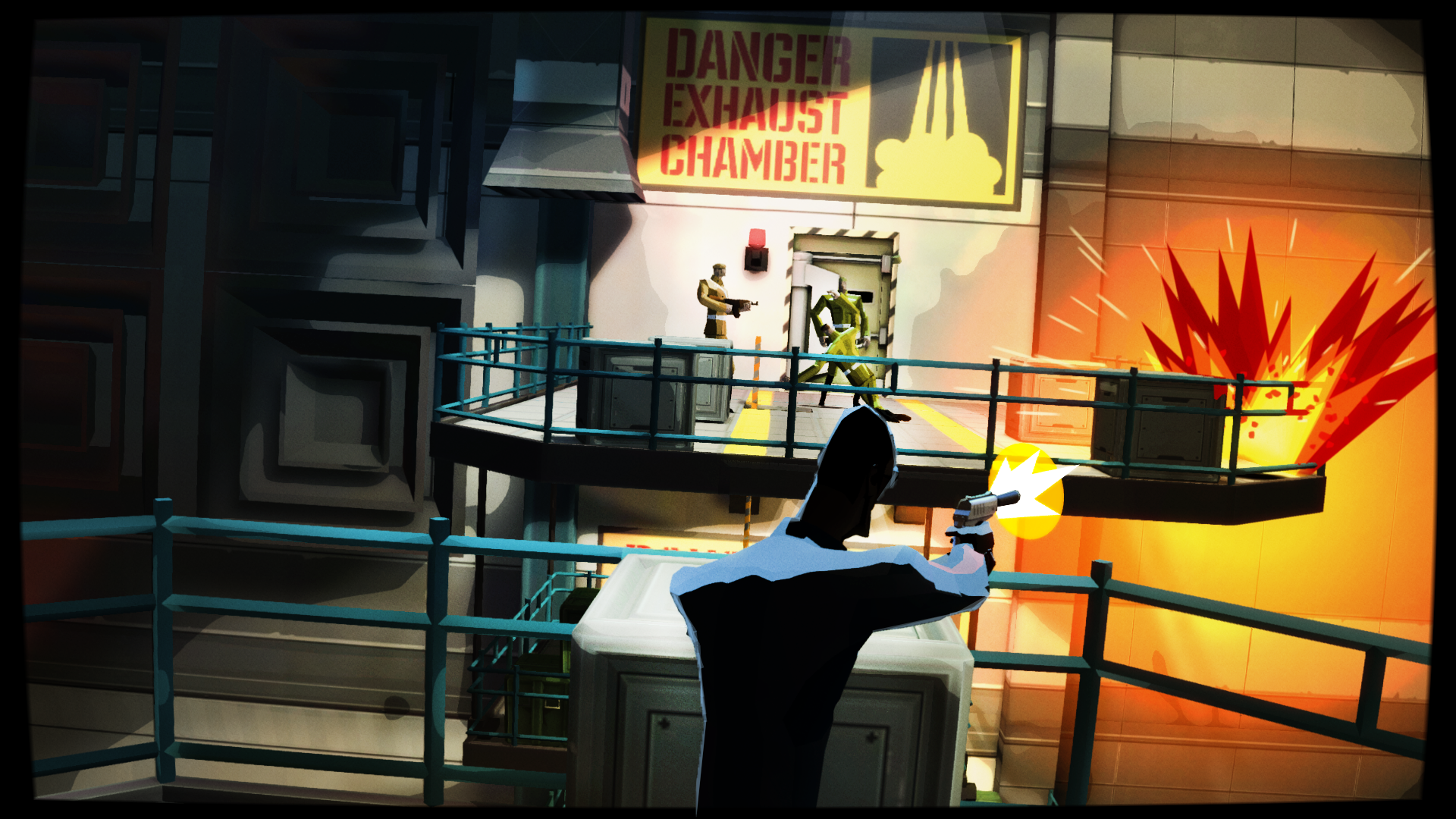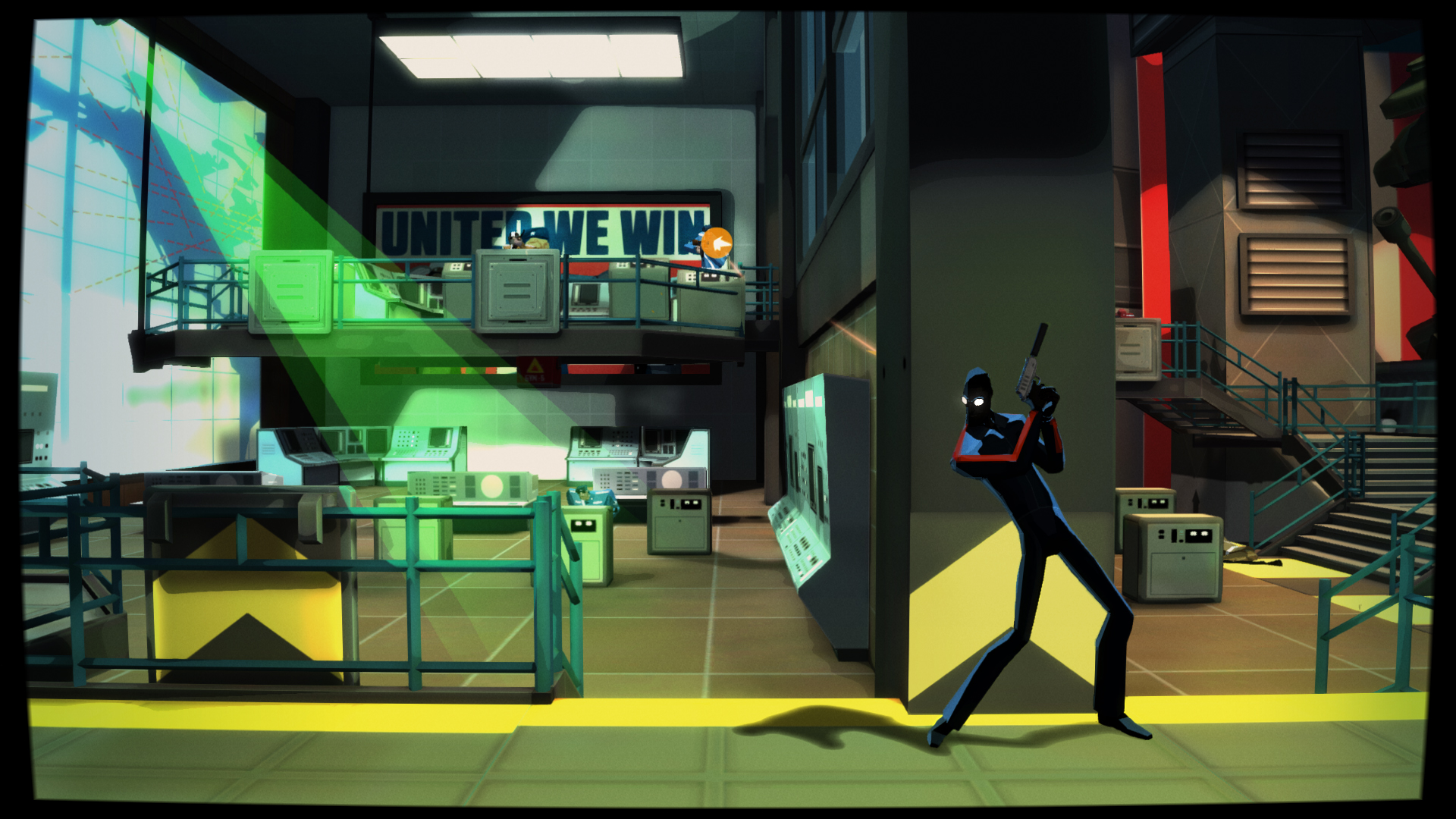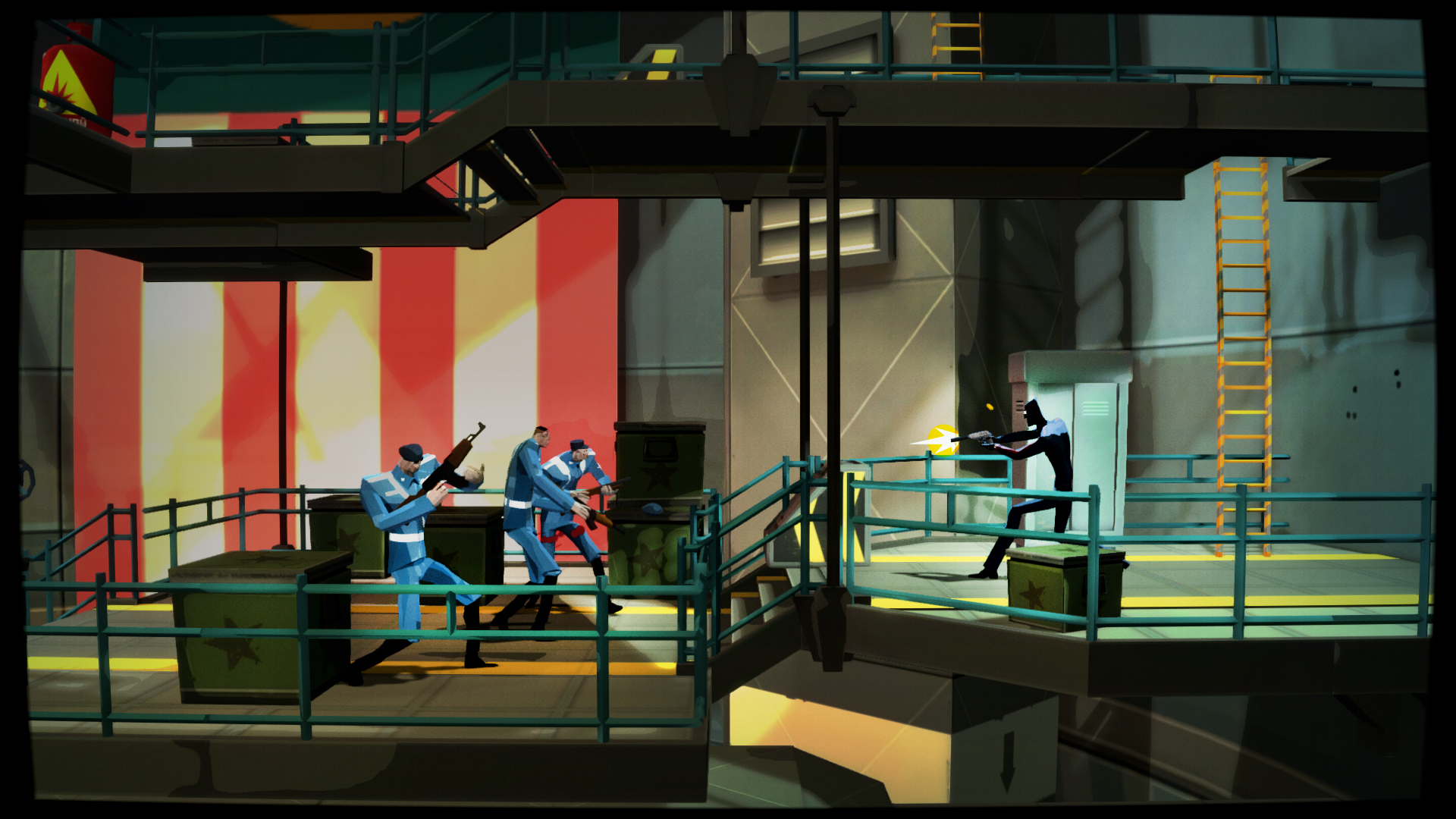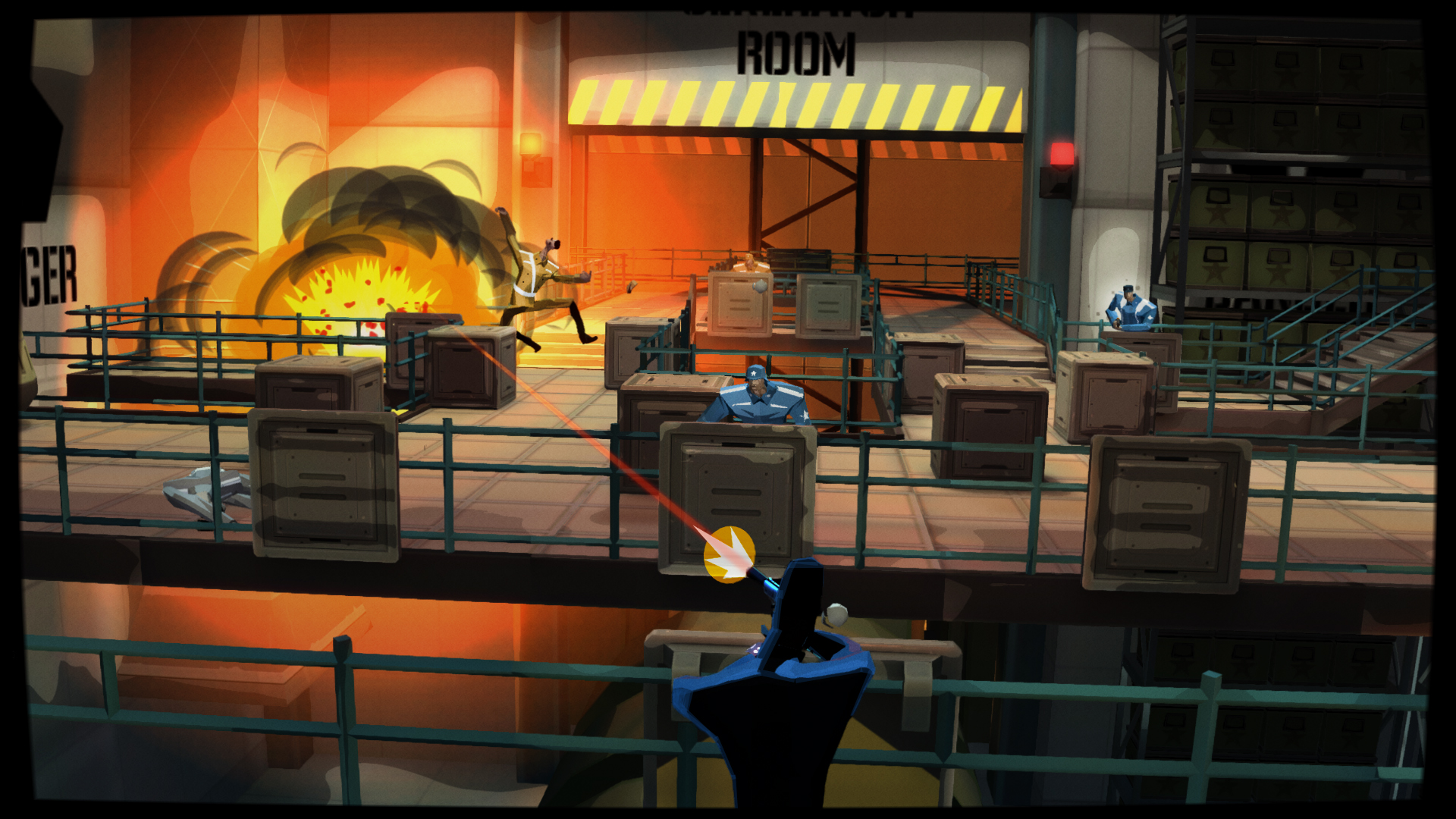The PlayStation 4's ever-growing downloadable game library has begun to approach an interesting milestone. No, this is not some crazy sales mark, nor is it the point where every genre imaginable is represented. Because there are high numbers of good, great, and outstanding titles on the PlayStation 4's storefront, games that are simply neat turn into a metaphorical tally mark on the wall. Numerous novel experiences are quickly forgotten, regardless of how much enjoyment they may have generated. CounterSpy, the first title from independent developer Dynamighty, makes for a fun few hours, but doesn't stand out enough to be considered among the PlayStation 4's elite.
CounterSpy takes place in the midst a quasi-realistic version of the Cold War conflict of the 1950s and 1960s. Two major factions, the Imperialists (America) and the Socialists (the USSR), are locked in a bizarre nuclear conflict, with the fate of the planet hanging in the balance. Sounds familiar, right? Wrong. In CounterSpy, the Imperialists and Socialists aren't pointing their nuclear weapons at each other, they're pointing them at the Moon. In this universe, hitting the Moon with a nuclear missile will cause the massive space rock to enter Earth's gravitational field, sending it spiraling towards the planet. Needless to say, this would immediately end all life on Earth. It's an interesting concept that CounterSpy manages to have a bit of fun with, as indicated by the campy nature of the environment and dialogue.
To complete the campaign, players have to gather twenty-five components of the nuclear launch plans (divided into sections of five) by playing any combination of Imperialist or Socialist levels. Players can hop between procedurally-generated stages on either side of the conflict, allowing the difficulty to depend highly on user bravery. CounterSpy's alert and life systems are unified into a single DEFCON rating that counts down from five to one , before initializing a "60 Seconds to Launch" sequence, based upon detection and player death. This rating carries over from stage to stage on that particular faction's side, meaning that one could get to DEFCON 1 on the Imperialist side and play the rest of the game with a lower level on the Socialist Side. Because every stage has a different amount of launch plan components, it might be beneficial to play on the side with the higher DEFCON level in order to progress faster. This structure benefits CounterSpy in the creative sense, but harms it by reducing the playtime to a couple of hours. Before moving on, let's quickly address the elephant in the room. Yes, both sides have the exact same nuclear launch plans, and yes, Dynamighty makes a joke about this. It's a brilliant touch, as each enemy faction seems as evil and stupid as its counterpart.
Enter the Agent, an unnamed spy working for the rogue C.O.U.N.T.E.R. Agency. Dressed in a fashionable black polygonal lycra bodysuit, the player-character is a master of stealth and combat. The latter skillset is arguably CounterSpy's most important feature, as players aren't punished for not maintaining stealth at all times. Whereas in Thief, the combat is so brutally clunky that stealth is always required, CounterSpy allows players to improvise their way through each situation a la Metal Gear Solid V: Ground Zeroes or Dishonored. Granted, this is a 2.5D side-scroller, so don't expect to hijack jeeps and go nuts like Big Boss, but the concept is absolutely similar. Attempt to be stealthy at first (or don't), and when things go wrong, mow everyone down as quickly as possible. It undoubtedly benefits CounterSpy that its gameplay is designed with creative improvisation in mind.
Unfortunately, the opportunities for creativity that CounterSpy provides are often hindered by some downright archaic shooting mechanics. This isn't to say that its gunplay is broken, as it absolutely works, but one can't help but feel as though he or she is playing an arcade shooter straight out of 1997. Optimists might suggest that the PlayStation-era shooting mechanics and blatantly jagged polygonal graphics make for a nice throwback to the days where console exclusivity actually meant something. Topical digressions aside, its hard not to get the sense that something simply feels off whenever a shootout ensues. Perhaps this is simply a sign of the times, as numerous AAA and independent titles have changed the way the community feels about combat mechanics for the better.
CounterSpy's only dialogue, text-based communication between the faceless C.O.U.N.T.E.R. Agency and the Agent, comes after each time the player collects five launch plan components. The over-the-top nature of these exchanges give both the Agent and C.O.U.N.T.E.R. moments of pure wisdom and unadulterated stupidity. Combining the ridiculous dialogue with some hysterical environmental elements (most notably the "No Spies Allowed" posters littering the walls of both sides) makes for an experience that doesn't take itself too seriously. It's a fresh change of pace, as the gaming world has seen far too many overly serious stealth titles fall flat on their faces due to their attempted grimness.
The fun factor in CounterSpy cannot be understated; this is absolutely a neat, pleasant experience. The first time that the perspective switches from 2D to a contextual, over-the-shoulder view should inspire an audible, "woah.". Adding a variable perspective mechanic adds to the "cool factor" that Dynamighty was blatantly shooting for, so these camera shifts are generally a wonderful thing. Of course, these perspective changes can hinder the gameplay here and there by causing an enemy in the foreground or background to be unreachable, likely causing one's DEFCON rating to increase. These shifts also cause frustrating instances in the standard 2D perspective, leaving the player unsure of the depth of an enemy or object near him or her. Being unable to recognize whether or not a nearby foe is in the foreground of the scene directly inhibits melee combat, meaning that the player will receive a healthy dose of lead before defeating the enemy. These momentary frustrations might not seem like a massive flaw, but those who find themselves with little health and a DEFCON 1 rating could end up with a gameplay mechanic-induced "Game Over" screen.
It should be noted that CounterSpy's asymmetrical multiplayer functionality, if it can be called such, finds a way of adding to the experience. During each mission, players add to their overall score count and currency total, earning them leaderboard positioning and the ability to buy a variety of weapons and perks. The menu screen often displays the player with the closest score, thus providing an incentive to build up one's own stealth multiplier and score count. After this rival is "defeated," his or her body will be located somewhere in the next level, providing a cash reward should one find it. This neat little gimmick should provide players with more of an incentive to score highly, as these valuable rewards might just mean the difference between being able to purchase ammo before the next mission.
The opposite of its PLAY Promotion partner Rogue Legacy, CounterSpy should indisputably be played on the PlayStation 4 instead of the Vita. While noticeable, frustrating load times persist across each iteration, the Vita version suffers from perhaps the longest loading periods of any game on the handheld. When a level eventually loads, players will be met with an inconsistent framerate that can chop for up to sixty seconds at a time. It's truly a shame that this version runs poorly, as CounterSpy feels as though it's meant for the Vita. Those with both a PlayStation 4 and a Vita might eventually decide to play it on both systems, as this Cross-Buy, Cross-Save title has a separate trophy lists for each version. Sadly, CounterSpy forces players to make the unfortunate choice between minute-long framerate dips and occasional momentary framerate dips.
Closing Comments:
There's a lot to like about CounterSpy, but not enough to love. Its interesting polygonal graphics spawn original PlayStation-era nostalgia, but its archaic shooting mechanics feel just as dated. The campy dialogue should provide players with a few smiles, but there simply isn't enough of it. CounterSpy's awesome improvisational take on stealth can be hindered by both framerate inconsistencies and occasional perspective oddities. Clocking in at roughly two to three hours, it feels as though it ends a few hours too soon. CounterSpy is worth setting aside a random Saturday afternoon for, but it'll find a way of sneaking out of your memory just as quickly as it came in.
Version Reviewed: PlayStation 4






